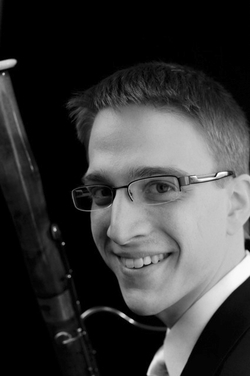
Photo credit: Pete Checchia
We can all agree: classical music is at a crossroads. Much of the rhetoric swirling about our period of change is negative. (According to blogger Andy Doe, we are now nearing the end of the eighth consecutive century of panicked cries of “Classical music is dying!”) Little of the discussion, however, has focused on an exciting new possibility—the use of the internet to increase our reach and amplify our collective voice.
My visionary colleague, percussionist Rob Knopper, embarked on a mission some 18 months ago to improve the MET Orchestra’s web presence. Using Squarespace, he designed a comprehensive, professional website with a minimal budget. Dedicated to giving our orchestra the representation that we lack on the Metropolitan Opera’s website, he recognized that, if we wanted to make our website a destination, rather than just an occasional resource, it had to have interesting, continuously updated content.
This is where a few more of us came in, including violinist Sarah Vonsattel, timpanist Jason Haaheim, librarian Jennifer Johnson, and myself. We were, and remain, eager to use this opportunity to reach a virtually limitless population of current and potential fans. By simply posting a link to our latest article, video, or infographic, we can reach tens of thousands of people—without spending a penny on advertising. Moreover, we organically target a more engaged audience than traditional media outlets, such as newspapers and television. People who like us on Facebook and follow us on Twitter, and their friends, and their friends’ friends, want to hear what we have to say. “Old media” outlets, whose subscribers and viewers don’t necessarily have a vested interest in classical music, can make no such guarantee. In a very real sense, we are using personal connections to reach those who are most interested in us.
This kind of viral reach is unlike anything that has been presented to the musical community before. And it is as indispensable as it is unprecedented. For the first time, we can show, in as much detail as we please, what the daily experience of being a musician is like. We can empirically demonstrate that ours is not a 20-hour workweek, that we are relatable people, and that classical music, an authentic experience in an increasingly inauthentic world, is more relevant than ever.
Our features have included an infographic about reed-making; a series, inspired by the wildly successful Facebook page “Humans of New York,” entitled “Humans of the Met”; and the remarkable story of a man whose harrowing experience in a blizzard atop Mount Rainier led him on a pilgrimage to a Met performance of Così Fan Tutte.
These examples embody the goals of our website content:
- Humanize musicians.
- Help the public understand the daily experience of our jobs.
- Interact with fans in ways the traditional concert experience largely prevents.
Content has been mostly created in-house, with a tremendous amount of work coming from, among others, violist Mary Hammann and her husband, documentarian Richard Kaplan; cellists James Kreger and Kari Docter; percussionist Greg Zuber; violist Katherine Anderson; trumpet player David Krauss; violinist Yoon Kwon; associate musicians, retirees, and many more. An orchestra is a treasure trove of great stories and storytellers.
When a musician has an idea, it is tentatively scheduled in one of our weekly slots. (We try to keep a “buffer” of several backup posts, since life can intervene, preventing projects from being completed on time.) Before it is formatted for the website, it goes through one of several editors for finishing touches. These editors are also responsible for posting that content to the website and advertising it on our Facebook page and Twitter feed. Posting takes no more than five minutes and complements our social media presence, ably led by oboist Susan Spector and violinist Miran Kim.
Much of our most successful content has been that which delves deepest beneath the surface: the nature of being a music librarian, the experience of an audition, or the thoughts that are going through one’s mind in a performance. This is what people want to learn about, because it is so often foreign to their own experience.
When negotiations turn sour, the internet is the most powerful tool we have ever been presented in the battle for public opinion. In a stable work environment, it is yet another way to connect people to classical music. The most exciting part? This is just the beginning. The MET Orchestra Musicians’ web presence (and that of enterprising musicians and orchestras around the country) is only the first step in revolutionizing how musicians relate to the larger public.





